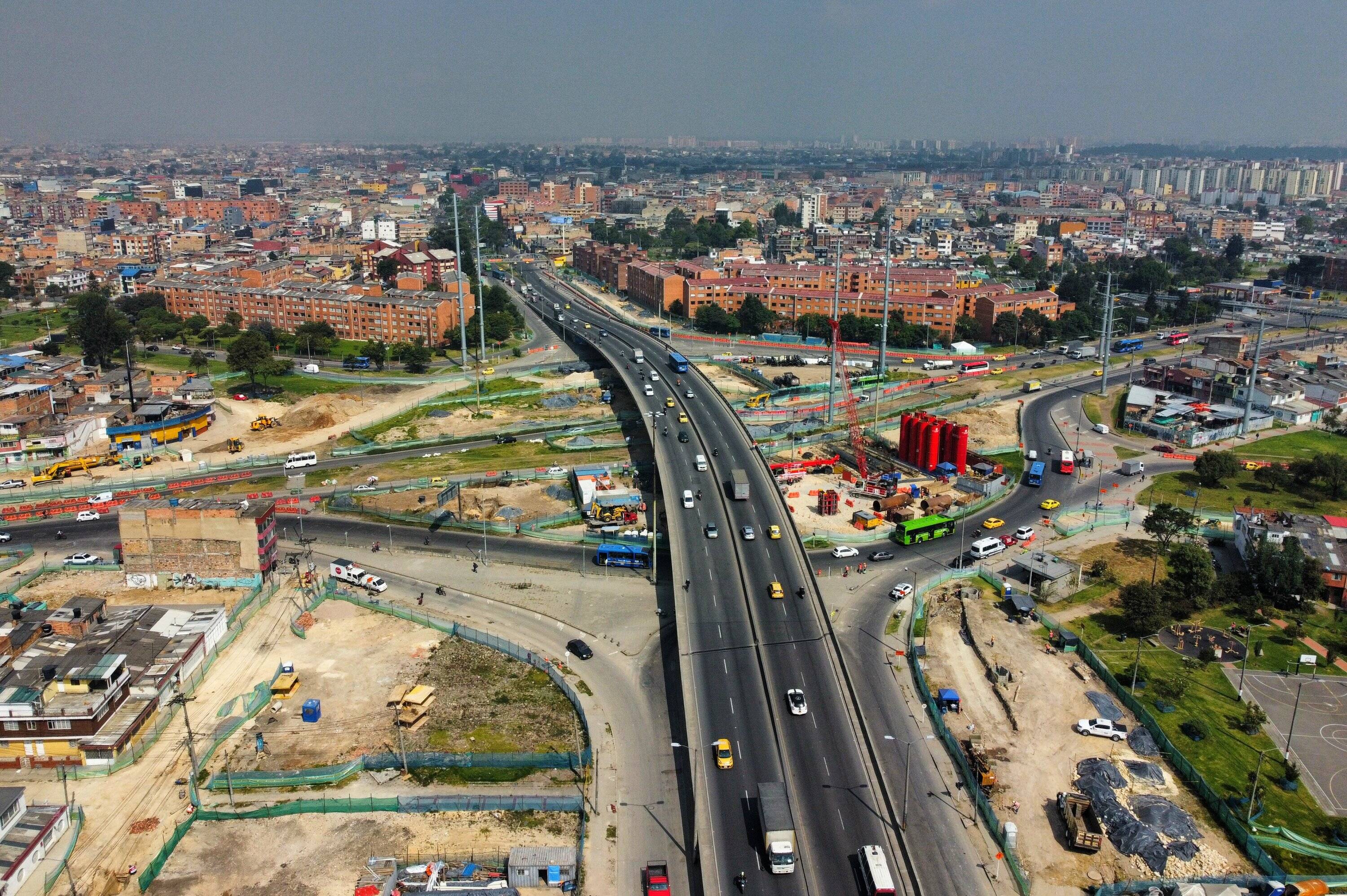'Colombia needs projects, the hope is for a revival in energy': National Development Finance Corporation

Although it has not yet reached its 15th anniversary, the National Development Finance Corporation has become a benchmark for the infrastructure sector in Colombia.
Last year, the entity, whose main partner is the Nation, committed 2.2 trillion pesos in credit resources and achieved profits of 191.344 billion pesos.
The intention is to continue growing and remain on the radar not only of the central government, but also of departments and municipalities. EL TIEMPO spoke with the institution's president, Francisco Lozano, about this and other topics. This is the edited version of the interview.
Last year's results show a broader scope for the Financial Institution… That's right. It's a logical evolution, because when the FDN was created, its main mandate was to secure financing for fourth-generation (4G) highway concessions . Since the process took time, that was the focus for a significant period. But the challenge has always been to reach other sectors in both financing and structuring.
Because? Because of our work as a development bank. In this sense, the country needs an institution that can structure projects in all infrastructure-related sectors. And that requires knowledge, people's training, and sector specialization, something that demands patience. I think we only achieved that goal last year. Now the challenge is to maintain it.
What did they achieve in 2024? Entering sectors where we've been tangentially involved. For example, we're developing two large educational campuses, one with the Ministry and the other with the Cundinamarca Governor's Office. In hospitals, we work with institutions such as Simón Bolívar and the National University. There are also initiatives underway in both energy and telecommunications. And we remain very active in the transportation sector, of course, which includes highways, ports, airports, and railways.

Infrastructure projects, such as the Bogotá Metro, will contribute to improved economic performance. Photo: Carlos Arturo García M.
Perhaps the biggest challenge is for government officials to understand the FDN and know they can rely on us to move their key projects forward. The goal is for governors, mayors, and ministers to understand that they can approach us for support in structuring initiatives and subsequent financing . Of course, we already work with a significant number of regional and local governments, in addition to the national government. But we still need to make a significant commercial effort to make ourselves known, and we are willing to do so, not least because we can help partially finance pre-feasibility studies.
They approved a new strategic plan. What are its main elements? First, diversification. This is the case with energy, especially unconventional energy, such as solar and wind. We have designed products that adapt to the characteristics of different sectors. We have also diversified into financing and resource funding. To cite one example, we have a way of reaching where there are cheap resources for the energy transition.
How much growth does the FDN have with a portfolio that is already approaching seven trillion pesos? We have already approved loan commitments for an additional three trillion pesos and commitments for liquidity lines for an additional one trillion. Overall, we're going to triple our portfolio compared to the beginning of this decade. Due to regulations associated with what's known as Basel III, our growth capacity is limited to around 10 to 12 trillion pesos. That said, we're working on options to raise that ceiling.

The metro is the largest infrastructure project in the country's history. Photo: Archive. EL TIEMPO
Colombia is lacking projects. The hope is for a revival in the energy sector because the country needs to grow its generation. There are also railway projects at the national, regional, and local levels. We'll have to see how the existing proposals pan out, but for now I want to highlight the recent award of the La Dorada – Chiriguaná section to a Colombian-Spanish consortium, following a bidding process in which three bidders participated.
Has knowledge of this topic been acquired in the country? Undoubtedly. The conversations are much more sophisticated and fluid now because, in both the public and private sectors, the actors involved in infrastructure know much more.
You've become part of the bicentennial group. What does that mean to you? We're different from other banks because we focus on a very specialized sector: projects. Obviously, there are interesting things to be done; today, we know much more about what our colleagues at other banks are doing, and we've found some synergies.
How much can international turbulence affect them? It's impossible to know because there's so much volatility. We're confident that our strategy, which is based on funding from multilateral organizations and climate funds, will allow us to continue to have low-cost resources.
Where do you hope the FDN will be by the end of this decade? A portfolio of 15 billion pesos, with many loans, reflecting our support not only for large projects, but also for those of a relatively smaller size that are regional or local. This means being a recognized entity because it helps the country launch initiatives without problems, that are executed on time, on budget, without so much litigation . I also think this is important for people's morale. The inhabitants of a country, a department, a city feel proud if emblematic projects that improve their quality of life begin to turn out well.
More newseltiempo





